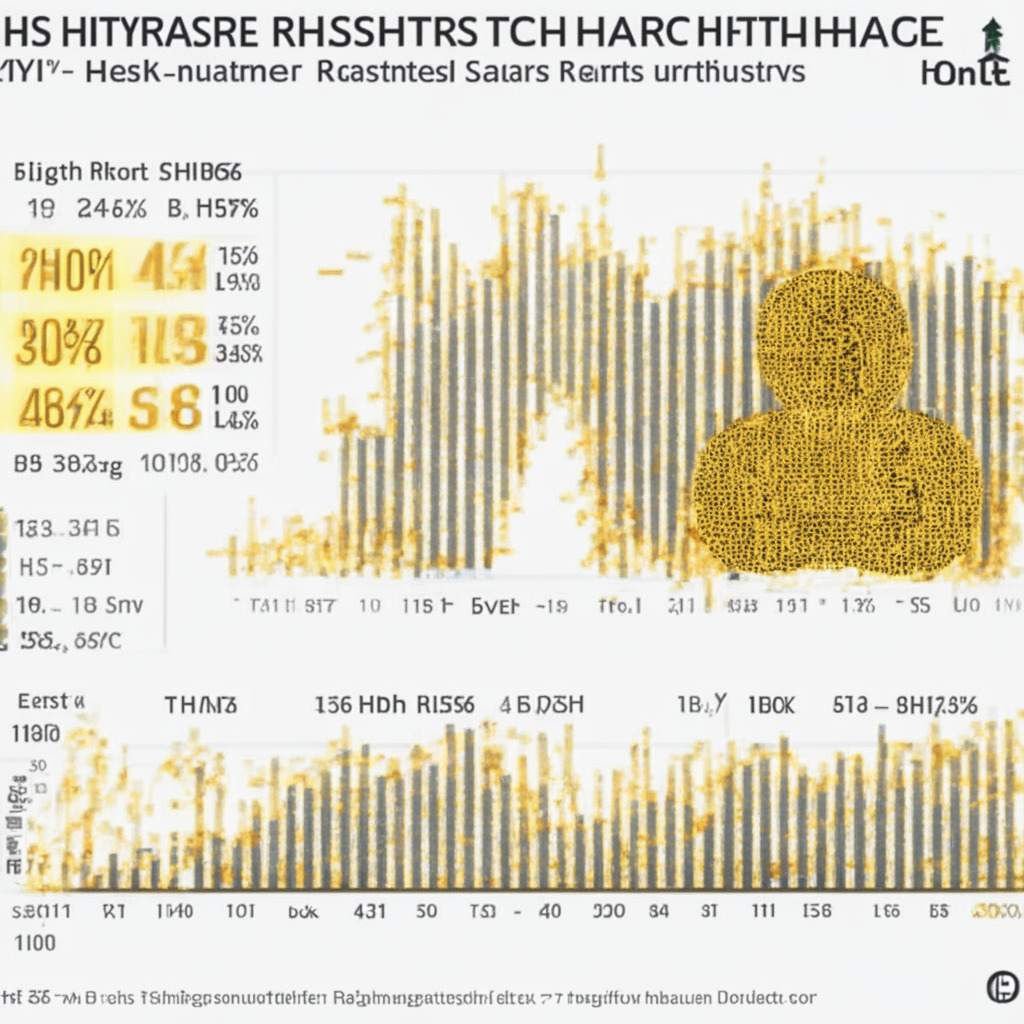Understanding profit and loss (PnL) is crucial for cryptocurrency traders to make informed decisions and manage portfolios effectively. Familiarizing with essential concepts like mark-to-market, realized PnL, unrealized PnL, and employing suitable calculation methods can significantly impact a trader’s performance and success in the crypto market.
Search Results for: Coin Metrics
Exploring BRC20 Tokens: Boon or Bane for the Bitcoin Blockchain?
The new experimental token standard, BRC20, has generated substantial interest, with over 10,487 tokens built on Ordinals protocol and a market cap exceeding $95 million. The rise of BRC20 tokens and Ordinal inscriptions has sparked debates over high transaction fees, unconfirmed transaction backlogs, and their impact on practical usage and adoption of cryptocurrencies.
Coinbase Stock Price Woes: The Struggle with Regulatory Uncertainty and Its Impact on Investors
Crypto exchange Coinbase’s stock price faces pressure as US regulatory uncertainty continues. Citi analysts downgraded Coinbase shares, citing the company’s struggles with regulators. The stock’s future depends on the evolving US regulatory landscape, which could benefit the broader crypto industry if resolved.
Coinbase Lawsuit & The Great Biometric Privacy Debate: Risks vs. KYC Compliance
Coinbase faces a proposed class-action lawsuit for allegedly violating Illinois’ Biometric Information Privacy Act (BIPA) by collecting and storing customers’ fingerprints and facial templates without proper permission. The lawsuit raises concerns about exposure to privacy risks and potential identity theft if the exchange’s biometric database is breached.
Bitcoin Hash Rate Surge, Ordinals Popularity & Network Stability: Analyzing the Pros and Cons
The Bitcoin hash rate recently reached 439 EH/s, indicating network strength and growing global investments in mining infrastructure. Daily transactions now exceed 682,000, driven in part by the rising popularity of Bitcoin Ordinals, non-fungible tokens built on the Bitcoin network. The enhanced security from a higher hash rate and increased use of renewable energy addresses concerns of centralization and environmental impact.
Balancing KYC Compliance and Biometric Privacy: Lessons from the Coinbase Lawsuit
A proposed class-action lawsuit against Coinbase highlights the importance of securing user data and balancing biometric information collection with privacy concerns. Ensuring KYC compliance is crucial, but maintaining user trust and adhering to privacy laws are equally important for the future stability and growth of the blockchain and cryptocurrency sectors.
Bitcoin Volatility Amid Banking Crisis: Analyzing Professional Traders’ Positions & Market Impact
Between April 25 and May 1, Bitcoin experienced significant price fluctuations, ranging between $27,200 and […]
Marathon Digital’s Mining Decline Vs the Foul Play in Crypto Markets: A Tale of Ups and Downs
“Marathon Digital’s Bitcoin mining yield declined due to adverse weather and lower transaction fees, despite a 599% increase from June 2022. However, Bitcoin miners reportedly earned $184 million in Q2 2023. Yet, hacking risks and operational challenges linked to climate change remind us of the industry’s instability, insisting on continued vigilance and resilience.”
Enhancing Ethereum Resilience: The Future of Distributed Validator Technology
The push for decentralization in the blockchain world is reaching new heights with the focus on distributed validator technology (DVT), aiming to enhance Ethereum blockchain’s resilience. DVT decentralizes validators, allowing duties to be distributed across multiple node operators and eliminating single points of failure, thus providing a more stable environment for protocols and use cases.
Binance SEC Charges: Tai Chi Strategy vs Operation Chokepoint 2.0 Debate
The SEC has filed 13 charges against Binance, raising questions on whether the exchange used its “Tai Chi” strategy to evade regulators or if the SEC is implementing “Operation Chokepoint 2.0” to disrupt crypto industry growth. The outcome of this case will significantly impact future crypto regulation.
Crypto Tax Regulations: Legitimizing the Industry vs Hindering Growth and Privacy
US Congressmen Brad Sherman and Stephen Lynch urge for crypto tax regulations, highlighting tax evasion concerns in the industry. Regulations could legitimize crypto and encourage adoption, but critics argue it may hinder growth and limit decentralization benefits.
US Crypto Mining Tax Proposal: Impacts, Reactions, and the Future of Regulation
The proposed Digital Assets Mining Energy (DAME) tax, which aimed to impose a 10-30% tax on electricity used for crypto mining, failed to make its way into a U.S. debt ceiling bill. The tax’s potential impact on global emissions, renewable energy incentives, and the uncertain regulatory environment stirred debates within the crypto community, highlighting the need for governments to embrace and properly regulate the evolving blockchain future.
DAME Tax Debate: Balancing Crypto Mining, Environmental Impact, and Industry Growth
The proposed Digital Asset Mining Energy (DAME) excise tax in President Joe Biden’s budget aims to reduce greenhouse gas emissions and electricity costs by taxing 30% of electricity used by US cryptocurrency miners. Critics argue it could drive miners to countries with looser environmental regulations, potentially increasing emissions. The tax’s impact on renewable energy production and the crypto industry’s growth remains uncertain.
Ethereum’s Struggle with $2000: Technical Hurdles, Economic Factors, and Potential Rebound
“Ethereum’s native token, Ether, is struggling to surpass the $2000 mark. It faces technical levels resistance linked to the U.S. dollar strength and Bitcoin’s market momentum. Ethereum ecosystem’s total-value-locked (TVL) decrease, and falling trends in active wallets and Non-Fungible Tokens (NFTs) volumes add to the challenge.”
Unraveling Binance’s Decline: A Conspiracy of Regulations, Promos, and Competitors
“Binance, the world’s top cryptocurrency exchange, continues to undergo a significant drop in its spot market share, marking the 7th consecutive month of decline. The report attributes this decrease to the end of a zero-fee trading promotion, escalating regulatory concerns, and increased competition from alternative platforms. This suggests that short-term promotional strategies may not prove sustainable amid persistent regulatory challenges.”
European Crypto Regulation: Balancing Sustainability, Transparency and Freedom
The European Securities and Markets Authority (ESMA) has published its second consultation paper on cryptocurrency regulations, focusing on sustainable indicators for distributed ledgers, disclosure of insider information, technicalities within white papers, transparency measures and record-keeping for Crypto asset service providers. ESMA’s move aims to encourage a more sustainable, transparent, and accountable crypto-market.
Unveiling the Veil: Chainlink’s Multisig Reduction and Other Noteworthy Crypto Developments
Chainlink’s change to its multisig wallet practices has raised questions around transparency and accountability in the crypto world. Meanwhile, Mixin Network offers a bounty to recover exploited funds, Uniswap seeks increased funding, and Curve Finance’s founder reduces his debt. Progress, despite controversy, highlights the resilience and potential growth of the DeFi sector.
Uniswap Draws Battle Lines: Stakeholder Interests Vs Financial Prudence in $62M Funding Bid
Uniswap Foundation has proposed on-chain funding of $62 million. The funds are to support operations and research grants, despite experiencing a $1.29 million loss. This move highlights the challenges in the blockchain sector between progressing innovation and maintaining financial stability.
Bull Meets Bear: Dissecting Polygon’s Resilience Above $0.50 Amid Bearish Sentiments
Despite market uncertainties, Polygon’s (MATIC) resilience above the $0.50 mark, robust upgrades, collaborations, and rewarding loyalty programs align with bullish sentiments, dwindling the likelihood of the token trading below $0.50. However, future market fluctuations remain unpredictable in the crypto rollercoaster.
Indian Crypto Woes: Waiting, Losing Traders, and Fumbling with Tax Rules
“The Indian crypto industry faces a long wait for a softer crypto tax structure due to a 1% Tax Deducted at Source (TDS) on crypto deals enforced by authorities. This tax led to reduced trading volumes, pushing investors to foreign platforms. Despite lack of formal discourse with legislative players, WazirX CEO, Nischal Shetty, remains optimistic about India moving towards more crypto-friendly policy.”
Ethereum Market Dynamics: Potential Climb vs Increasingly Uncertain Terrain
“The Ethereum market exhibits dynamism, with ETH showing resilience after a drop and subsequent 6% rebound. Despite macroeconomic factors possibly boosting cryptocurrencies, concerns over high network fees, regulatory uncertainties and potential U.S. indictment of popular crypto exchange Binance, persist.”
Crypto Market Cap Surges: Ties to Inflation Data and Federal Reserve Rates
Cryptocurrency market capitalization has risen by 1.24%, reaching $1.035 trillion as of September 14, largely due to gains in Bitcoin, Ethereum, and Solana. This increase reflects eased inflation concerns and speculation surrounding a potential pause on Federal Reserve interest rate hikes. Additionally, solid fundamentals or promising technical analysis have led to gains in other cryptocurrencies such as Hedera, Wall Street Memes, THORChain, Bitcoin BSC, and Curve DAO.
Harnessing Blockchain and Cryptocurrency Statistics in Traditional Finance Institutions
“Cryptocurrency and blockchain statistics offer critical insights into the health of the crypto industry for traditional finance institutions. Key metrics such as realized cap, Bitcoin’s halving, hash rate, and growth in wallets storing significant BTC quantities provide invaluable data for strategic decision-making in the ever-evolving cryptocurrency market.”
Phantom Wallets: Unmasking the Misleading User Count in Crypto Ecosystems
Active user count in blockchain technology may be misleading, as a small group can manipulate activity across multiple wallets, implying false user diversity. This ability to operate multiple wallets, while being used also for legitimate reasons, can inflate a project’s active user numbers potentially misleading investors.
Unmasking the Crypto Mirage: Wash Trading Threatening Market Trust and Stability
Solidus Labs signals market manipulation in the crypto scene, with over 20,000 tokens allegedly subject to wash trading on decentralized exchanges. They highlight the need for regulatory oversight to establish stability and credibility in an industry currently prone to manipulation and distorted metrics.
Predicting Render Token’s Future: The Crypto Rollercoaster of Opportunity & Uncertainty
“The Render Token shows potential for growth in the long term, its RSI and MACD histogram indicate increased buying momentum. However, the market seems balanced, with speculation about whether it will break its current resistance or continue consolidating. Furthermore, emerging projects like Launchpad XYZ are garnering attention.”
From Crypto Anarchy to Strict KYC: Is Privacy in the Blockchain Industry at Risk?
Gracy Chen, MD at crypto exchange Bitget, suggests KYC measures might get stricter with users undergoing ID verification perhaps more than once a year. Incorporating biometrics such as facial recognition, fingerprints, or iris scans, into KYC procedures is also gaining traction. Bitget has made KYC mandatory, reflecting a trend in crypto industry’s commitment to transparency and anti-fraud regulations. Chen also stresses the importance of balancing security and privacy, highlighting the role AI can play in enhancing AML capabilities.
Arbitrum’s Fall: Unraveling the Possible Causes Behind its 14.5% Price Drop
Arbitrum, a leading layer-2 Ethereum solution, faces a downturn marked by a 14.5% token price plunge, decreased decentralized application activity, and a dip in total value locked (TVL) to $1.6 billion. This suggests potential investor uncertainty amidst growing competition and declining network usage, casting doubt on ARB’s future unless it successfully boosts transaction volumes and expands its user base.
Navigating Cryptocurrency Roadblocks: Singapore’s Regulatory Approach and the FinTech Sandbox Dilemma
“The Monetary Authority of Singapore (MAS) announced no businesses qualified as cryptocurrency payment providers under the FinTech Regulatory Sandbox. MAS is cautious about adopting payment innovations and emphasizes a need for crypto businesses to demonstrate robust Anti-Money Laundering controls.”
The Silent Threat: How CBDCs Could Erode Your Financial Freedom
“Central bank digital currencies (CBDCs) offer governments easy access to data collection, surveillance, and asset seizure. Although promoted for benefits such as tax collection and combating financial crime, these programmable money forms may lead to increased transaction censorship and misuse from state control. Counteracting this potential erosion of liberty, cryptocurrencies offer a means to safeguard transactional rights.”
Analyzing the Future of BTC: Predictions Amid Global Challenges and Regulatory Uncertainties
“Crypto analyst Filbfilb shares his Bitcoin prediction, expecting it to reach $46,000 by 2024 despite potential obstacles like the Bitcoin spot price ETF issue and the ongoing pandemic. He advises tracking BTC price momentum and market positioning.”
Ethereum’s Struggle: Battling Market Fear Amid Shaky Support Levels
Despite Ethereum’s 31.3% price surge between March 10 and 18, there are concerns about the crypto’s ability to maintain this upward momentum. Rising bearish sentiment, decreases in key ETH price metrics, and negative market developments are troubling the ecosystem. There are fears over potential liquidation of some $4.8 billion ETH deposits held in the Grayscale Ethereum Trust, amid declining smart contract transactions and investor interest. Ethereum’s position is further pressured by its competitors like Visa integrating Solana blockchain and Coinbase planning to convert old versions of USDC to a new format.































